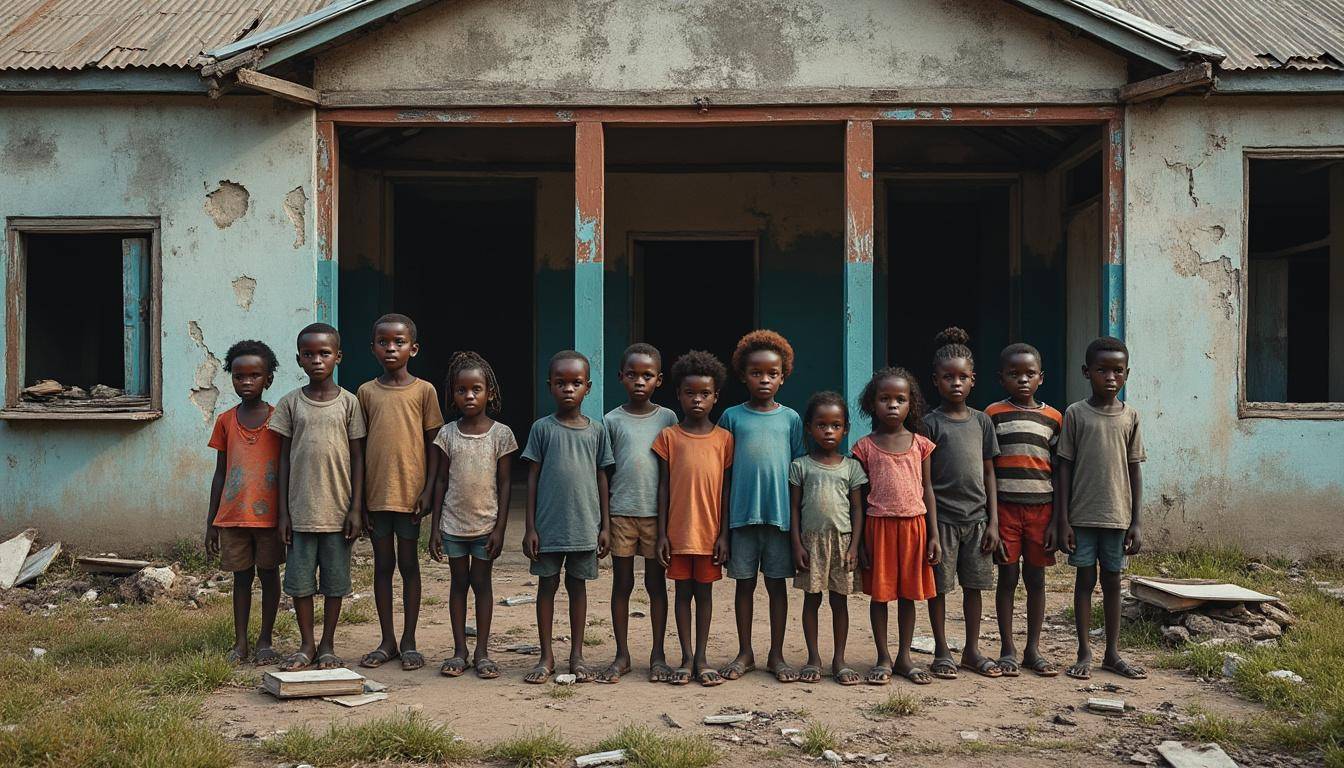Behind the recent international commitments to education lies a troubling reality: in 2025, millions of children worldwide continue to be denied access to quality schooling. Despite promising pledges such as the Compromiso de Sevilla, which aims to fund inclusive and equitable education, the alarming increase in out-of-school children exposes a deepening global crisis. With over 272 million children and youth excluded from primary and secondary education—and even more missing early childhood learning—this situation demands urgent, concrete action from governments, international donors, and civil society.
Staggering Numbers: The Global Education Crisis and Its Impact on Children
Recent data paints a stark picture of global educational exclusion. Over 272 million children and adolescents are currently out of school, a number that has surged by 21 million within a single year. Around 139 million boys and 133 million girls are denied the right to primary or secondary education, with nearly 200 million youth missing secondary schooling altogether. This crisis extends to conflict zones, where an estimated 13 million children cannot access education. Factoring in ongoing crises from regions like Gaza to Sudan brings the total figure of out-of-school children nearer to 285 million.
Moreover, global statistics often overlook another vulnerable group: about 175 million preschool-aged children remain unenrolled, missing the crucial benefit of early childhood education. This underlines a chronic structural gap in funding and policy focus that perpetuates inequalities and hampers holistic development.
- 139 million boys and 133 million girls out of school
- Close to 200 million missing secondary education worldwide
- At least 13 million children displaced by conflict excluded from school
- 175 million preschool-aged children lacking early education access
Organizations like Save the Children, UNICEF, and Education Cannot Wait have consistently highlighted these alarming trends, calling for urgent financial investments to reverse this trajectory.
Complex Causes Behind the Education Gap
The widening education gap results from a combination of factors, with funding cuts playing a significant role. Ahead of the 4th International Conference on Financing for Development in Sevilla, experts warned of decreasing national budgets for education and sharp reductions in aid from donor countries. These fiscal constraints limit governments’ capacity to provide free, quality education, train qualified teachers, and equip schools with necessary materials.
Conflict situations intensify these challenges, as education systems struggle to cope with displaced populations, destroyed infrastructure, and emergency needs. Meanwhile, systemic barriers such as discrimination and socio-economic inequalities persist, blocking many marginalized children from accessing schooling.
- Chronic underfunding of public education systems
- Donor countries cutting overseas aid for education programs
- Armed conflicts leading to school closures and displacement
- Structural inequalities and discrimination hindering access
Key players in the education sector, including Plan International, World Vision, Room to Read, and ChildFund, advocate for addressing these root causes through sustainable funding and inclusive policies.
Sevilla’s Promise: Financing for Inclusive, Quality Education
The recent Compromiso de Sevilla emerged from international dialogue with the stated aim of ensuring adequate financing for inclusive and quality education. This pledge signals an acknowledgment of the current educational emergency and the need for collaborative efforts.
However, the mixed responses to this commitment emphasize a critical point: aspirational statements alone cannot reverse the crisis. Governments must match words with action, particularly by protecting education budgets from austerity and meeting international funding benchmarks. These include dedicating at least 4–6% of gross domestic product or 15–20% of overall public expenditures to education, as agreed in global forums.
- Commit to increasing education budgets amidst fiscal pressures
- Protect public education from regressive austerity measures
- Align national spending with international funding benchmarks
- Reinforce donor countries’ obligations to overseas educational aid
The role of global alliances like The Global Partnership for Education and foundations such as the Aga Khan Foundation is vital in supporting governments through funding, expertise, and program implementation, especially in fragile contexts.
Mobilizing Partnerships to Support Education for All
Ensuring education reaches every child requires a concerted effort. International NGOs and advocacy groups work to bridge gaps, particularly where governments face financial and logistical constraints. Initiatives by Teach For All and programs such as mobile classrooms or community learning centers have proven effective in remote or conflict-affected areas.
These approaches highlight the importance of community engagement and innovative solutions in expanding access and improving learning quality. Recommitting to fund humanitarian education, as stressed in appeals by Education Cannot Wait and UNICEF, remains crucial to protecting vulnerable children during emergencies.
- Expand community-based and mobile learning programs
- Strengthen training and support for educators on the frontline
- Prioritize humanitarian education funding for emergency contexts
- Engage local stakeholders to foster inclusive education environments
How Families and Educators Can Contribute Amid the Crisis
As the funding and policy crises persist, families and educators worldwide play a crucial role in advocating for children’s educational rights and adapting local learning environments to new challenges.
Parents supported by resources such as those found on Education to the Top can engage in dialogue about equitable access and quality standards. Meanwhile, educators strengthen resilience by adopting innovative pedagogy, including remote learning techniques and inclusive curricula.
- Advocate locally and globally for education financing commitments
- Utilize and share educational tools tailored for diverse learning styles
- Support psychosocial wellbeing and safety in schools
- Promote awareness of the importance of early childhood education
Resources like Future Children’s Education Risk and insights into emergency education initiatives empower families and teachers to respond effectively.
Understanding and acting upon the education crisis means joining forces across sectors and borders. Only through substantial funding, sustained advocacy, and innovative collaboration can the global community fulfill the promise of education for all children.


